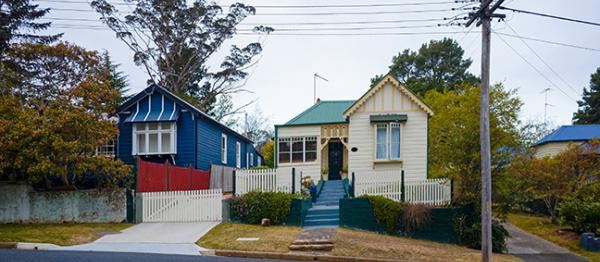27 April 2023
Smart home security systems: find the right one for your family
In recent years, smart home security systems have become more affordable and more varied in range. So, what’s on offer, what should you look out for and how do you find the right system for you?

As smart home technologies have become more widespread, the price point for consumers has lowered and the range of devices available has shot up. From entry-level, DIY setups to professional installations, there’s plenty to choose from. But any device that connects to the internet brings with it cybersecurity risk. Here’s what to look out for and what to consider.
Firstly - what’s a smart home security system?
A smart home security system connects to an app so you can see what’s happening and control your devices. They range from basic systems that include a couple of door and window sensors and motion detectors; to more advanced setups that include locks and video monitoring; to professionally installed and maintained systems that involve external companies providing 24/7 monitoring.
The “smart” doesn’t just mean these systems show up in an app, though. Most smart security systems also offer the ability to customise rules and routines, like turning on your lights when you unlock the front door, or unlocking doors when a smoke alarm goes off.
So how easy is it to plug in and get going?
While smart home assistants from the likes of Apple, Google and Amazon have become a common presence in Australian homes, setting up a smart home security system often isn’t as easy as plugging in your new devices and adding them to your home network - yet. Some systems integrate with all smart assistants, others only a few, while some require subscription services to function properly.
So when you’re choosing a smart home security system, here are a few things to consider:
Is cost a factor?
Smart home security systems run the gamut from fairly affordable or fairly pricey, depending on the type of installation you choose. Entry-level systems may offer fewer add-on components and support fewer wireless protocols, meaning lower efficiency and less bandwidth around your home. These more basic DIY systems are often strictly self-monitored, meaning they'll notify you via the connected app when something triggers an alert, but won't automatically notify authorities. This end of the market features well-equipped systems includes a wireless hub, door and window sensors, a motion detector and remote controls for under $150. If you’re prepared to brave the installation process yourself, you’ll be rewarded with basic security functionality and app connectivity.
At the other end, security companies offer professional installation and more robust coverage. These systems are usually controlled by touch screen hubs installed inside your home that support multiple wireless protocols, including low-powered Zigbee and Z-Wave radios - which typically communicate with battery-powered door and window sensors - and more energy-intensive but high-bandwidth WiFi, which is necessary for video monitoring. The extra under-the-hood flexibility allows them to control a huge range of home security components, including smoke detectors, cameras, and more. These higher-end options often require a contracted monthly subscription for 24/7 remote monitoring, often bringing their total cost to the thousands of dollars.
What are you looking for?
Most systems, no matter the price range, offer a combination of door and window sensors and motion detectors, with some also incorporating cameras into their network of protection. But many systems priced for the mid-range and up offer incredible amounts of customisation. Your system could expand to include long-life backup power supplies, WiFi range extenders, smart locks, light switches, smart power points, flood detectors, CO detectors, garage door openers, lights, sirens and more. But buyer beware: the cost of add-on components can vary between systems, with some brands charging a premium for additional extras.
How can I keep my network safe from cyberattack?
Any device that uses wireless connections and the internet can be vulnerable to hacking, and smart home security systems are no exception. It’s technically possible for hackers to gain access to your home network by waiting near your home and exploiting weaknesses in your cybersecurity in order to disable sensors and alarms. But with precautions in place, this risk can be reduced. It may sound obvious, but by changing your passwords from the default on your smart home security system and WiFi, you’ll have improved your protection from cyberattack. If you change those passwords to ones that contain a mix of letters, numbers, and symbols, your network will be even more secure. If you regularly update your password every month or two, even better. Some WiFi routers utilise an extra layer of software protection, while some security systems also feature embedded encryption (although these aren’t common). Regular firmware upgrades to your devices will also help to address security issues. You should contact the manufacturer of your chosen security system for tips on the best way of protecting your system against hacking.
Whether you’re planning to take the plunge with a comprehensive setup or a handful of standalone devices, the right combination of options to secure your property is out there.
This content is intended to be general in nature and is not financial or professional advice. We recommend you obtain independent professional advice relevant to your circumstances, before making any financial or commercial decisions.



